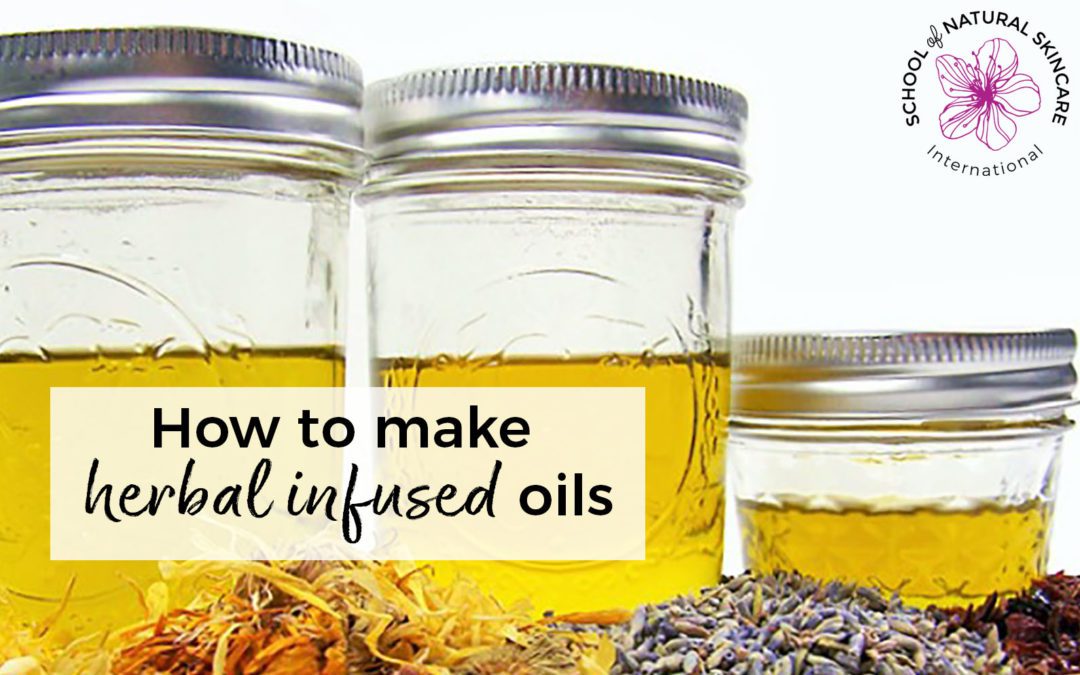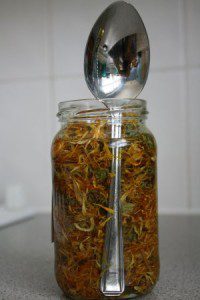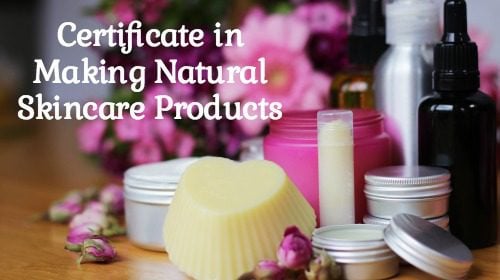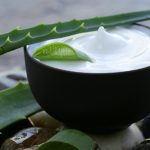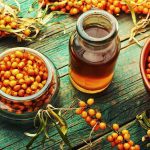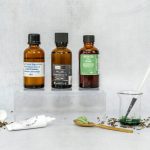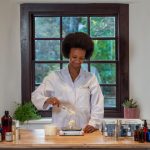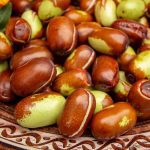A herbal infused oil (also known as a macerated oil) is carrier oil that has been ‘infused’ with the goodness of a herb or a flower. By letting herbs and flowers infuse in an oil for a certain period of time we are able to extract many of the powerful and healing properties of the plant into a usable form.
In this article we’ll explain how to make a herbal infused oil – in fact we’ll give you three different ways to do so!
Many herbs are suitable for infusing, both those with high levels of volatile oils and those with fat-soluble components. You can try infusing herbs such as rosemary, lavender, peppermint, plantain, calendula and comfrey, which lend themselves well to making herbal infused oils.
The basic idea is that the plant is immersed into a good-quality carrier/fixed oil such as almond oil, sunflower oil, jojoba or olive oil and either left naturally to heat in the sun over a period of few weeks, or heated in a bain-marie over a couple of hours. The oil absorbs many of the plant’s properties and the leached plant material is then strained out of the oil.
The oil that has been infused can then be used to make skincare formulations, balms, salves, creams, hair treatments, soaps and more. There are so many blending options to choose from and they are such fun to make and use.
Using dried herbs will ensure the longest shelf life of your oil. Using fresh herbs may introduce moisture into your infused oil, which will spoil it.
How to make a herbal infused oil
There are three main ways in which an oil can be infused: the cold infusion method, sun infusion method and heat infusion method. Here’s each method in more detail:
The cold infusion method
1) Clean and sterilize a glass jar and ensure it is completely dry.
2) Pack full of your dried herb (here we are using calendula).
4) Gently push a spoon handle or chopstick around the edge of the jar to release any air bubbles.
5) Put the lid on and leave to infuse for six weeks away from strong sunlight. You can pop the jar in a warm place such as an airing cupboard.
6) After six weeks strain the contents of a jar through a muslin cloth, squeezing to remove all the oil. Leave the oil to settle before using.
The sun infusion method
This is the traditional method of infusing the oils in the sun. The warmth of the sun will gently heat the oils and assist in the infusion process.
1) Clean and sterilize a glass jar and ensure it is completely dry.
2) Fill with your dried herb of choice. (Do not wash the herb or introduce any water to the process by using a wet jar or wet spoon for mixing.)
3) Using a carrier oil of your choice pour oil over the herbs ensuring they are completely covered. Fill the jar almost to the brim with oil as any air gaps will promote oxidation and will spoil the oil.
4) Gently push a spoon handle or chopstick around the edge of the jar to release any air bubbles.
5) Put the lid on and leave to infuse for six weeks on a sunny and warm counter or windowsill. Some people choose to place the jar in a paper bag so as not to damage the oil.
6) After six weeks strain the contents of a jar through a muslin cloth, squeezing to remove all the oil. Leave the oil to settle before using.
Heat infusion method
This is a much quicker way to infuse oils – good for the impatient!
The most important point to remember when creating herbal oils this way is to keep the heat as low as possible, because you don’t want to ‘cook’ the herbs. All you need to do is to place the herbs in a double boiler, slow cooker or bain-marie, cover with the oil of your choice and gently heat the herbs over a low heat for 2-6 hours. Turn off the heat and allow to cool. Strain the herbs through a muslin cloth and the oil is ready for use.
Once the oils are infused they will probably take on a new color and smell. Herbal oils will keep for approximately a year if stored properly in a dark and cool place. Some oils are more vulnerable to rancidity than others. Vitamin E oil may also be added to prolong the shelf life.
How to make lavender-infused coconut oil
This is a beautiful recipe, which can be used either on its own or to use in skincare making. Cold-pressed coconut oil has become immensely popular in recent years and in addition to its health benefits the oil has many beauty benefits too.
According to Whitney P. Bowe, MD, a dermatologist at Advanced Dermatology PC in Westchester and NYC, “The combination of anti-inflammatory, antioxidant, anti-bacterial and hydrating properties make it truly unique. Coconut oil is primarily composed of saturated fats and contains medium-chain fatty acids, which not only help to repair the skin barrier and trap water, thus hydrating the skin, they also reduce inflammation.”
Apart from using it on the skin, it is also great to use on a hair and scalp, as due to its low molecular weight and affinity for proteins it is able to penetrate deep into the hair shaft.
This oil infusion recipe uses a sun infused method.
You will need:
- A jar
- Coconut oil
- Dried lavender flowers
- Vanilla bean (optional).
How to make:
- Melt the coconut oil in a bain-marie.
- Fill a sterilized and clean jar with dried lavender flowers.
- Pour previously melted coconut oil into the jar, covering the flowers by at least an inch and making sure to leave some space at the top, so that the flowers can expand.
- Stir the oil with either chopsticks or a wooden spoon and cap the jar tightly. You can also wrap the jar in a foil in order to help the infusion process.
- Place the jar on a sunny windowsill for around 5-6 weeks, shaking the oil every day.
- Once the oil is ready strain it through a muslin cloth and store in a jar.
Oil macerations are also made to impart beautiful fragrances into the oils. You can also add chopped fresh vanilla bean into this infusion together with dried lavender flowers, which will add extra sweetness to the blend and will make the oil and you smell irresistible!
Want to create gorgeous products with your infused oils?
Then you’ll love our Certificate in Making Natural Skincare Products

